Goliath Tracked Mine — Nazi Suicide Drone
October 3rd, 2023
7 minute read
While Germany’s massive Tiger and Panther tanks and their variants demanded the attention of Allied troops in Europe, it was likely that Germany’s smallest “armored vehicle” captured the imagination of G.I.s and Commonwealth troops far out of proportion with its size and actual contributions on the battlefield.
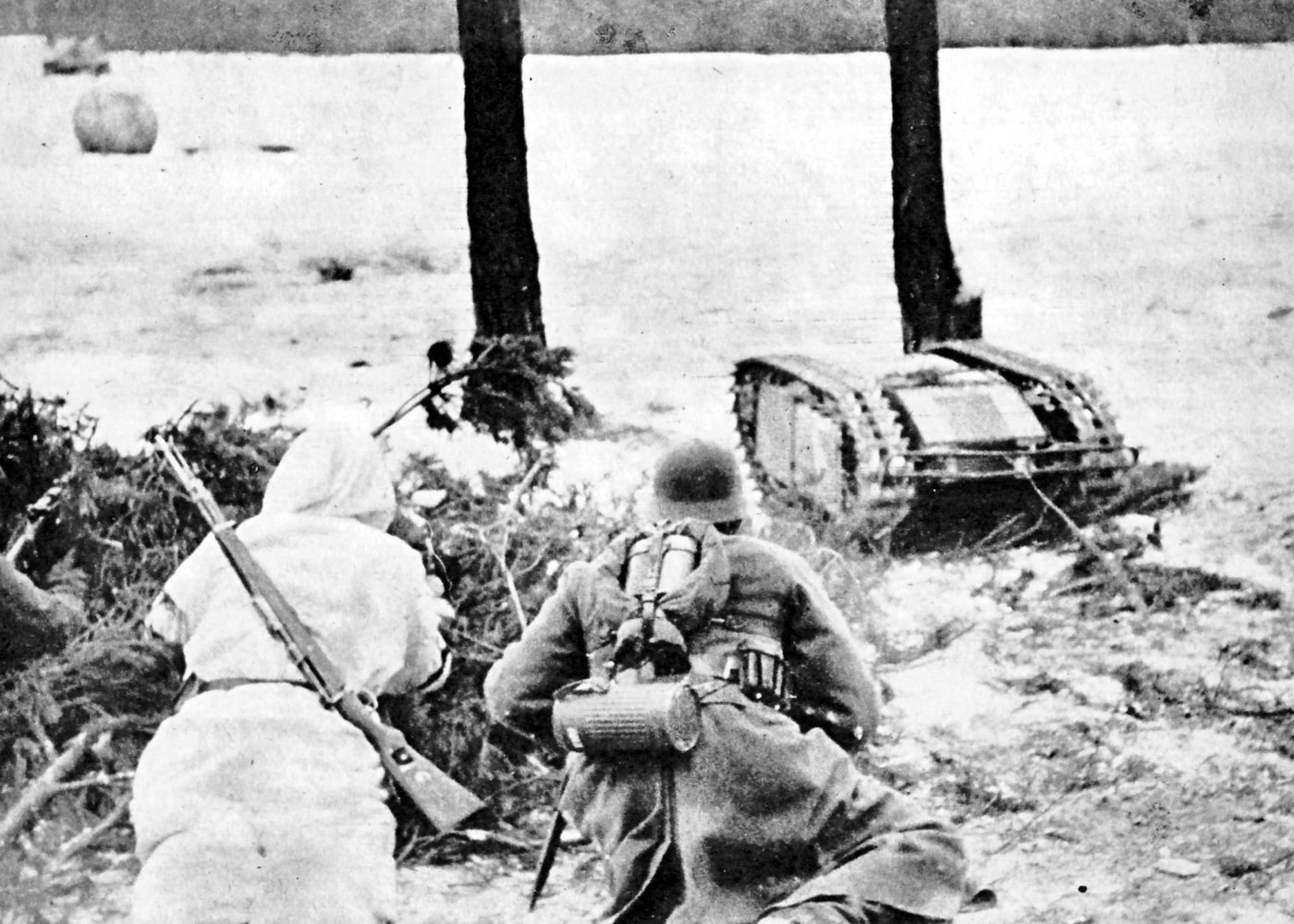
The Sd. Kfz. 302 and 303 Leichter Ladungstrager “Goliath”(sometimes called “Beetle” or “Doodlebug” by Allied troops) was a unique vehicle for World War II, far ahead of its time in concept. Developed as a remote-controlled, mildly armored, tracked mine, it has been described as a miniature tank ever since American troops first laid eyes on it in Italy during 1943.
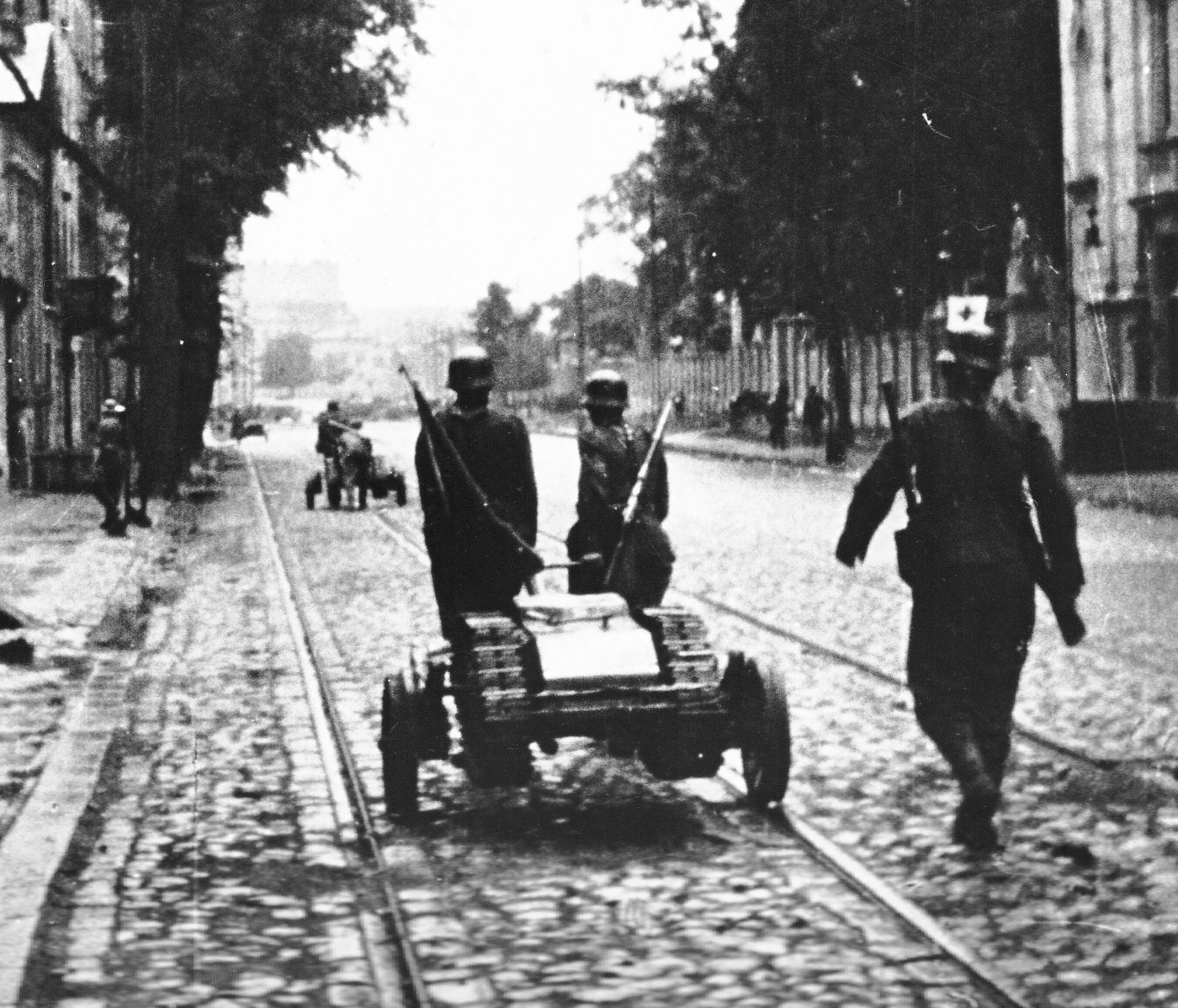
Goliath was approximately four feet long, two feet wide, one foot tall and weighed about 650 pounds. Despite its appearance, the Goliath is not a tank. It was, however, an innovative way to deliver an explosive charge to a pin-point target. The great-grandchildren of the Goliath are the current “land drones” in use on the battlefield in Ukraine — remote-controlled wheeled or tracked mines that move exceptionally fast.
Traced Mines — New Concept in Bomb Delivery
Developed shortly after the conquest of France, there is some indication that Goliath was inspired by a prototype vehicle discovered at the French Kegresse vehicle works. Wehrmacht planners turned to Karl Borgward to develop a “special purpose vehicle” capable of delivering at least 50 kg of explosives. After more than a year of development, the initial version (Sd. Kfz. 302) of the Goliath was ready in early 1942.
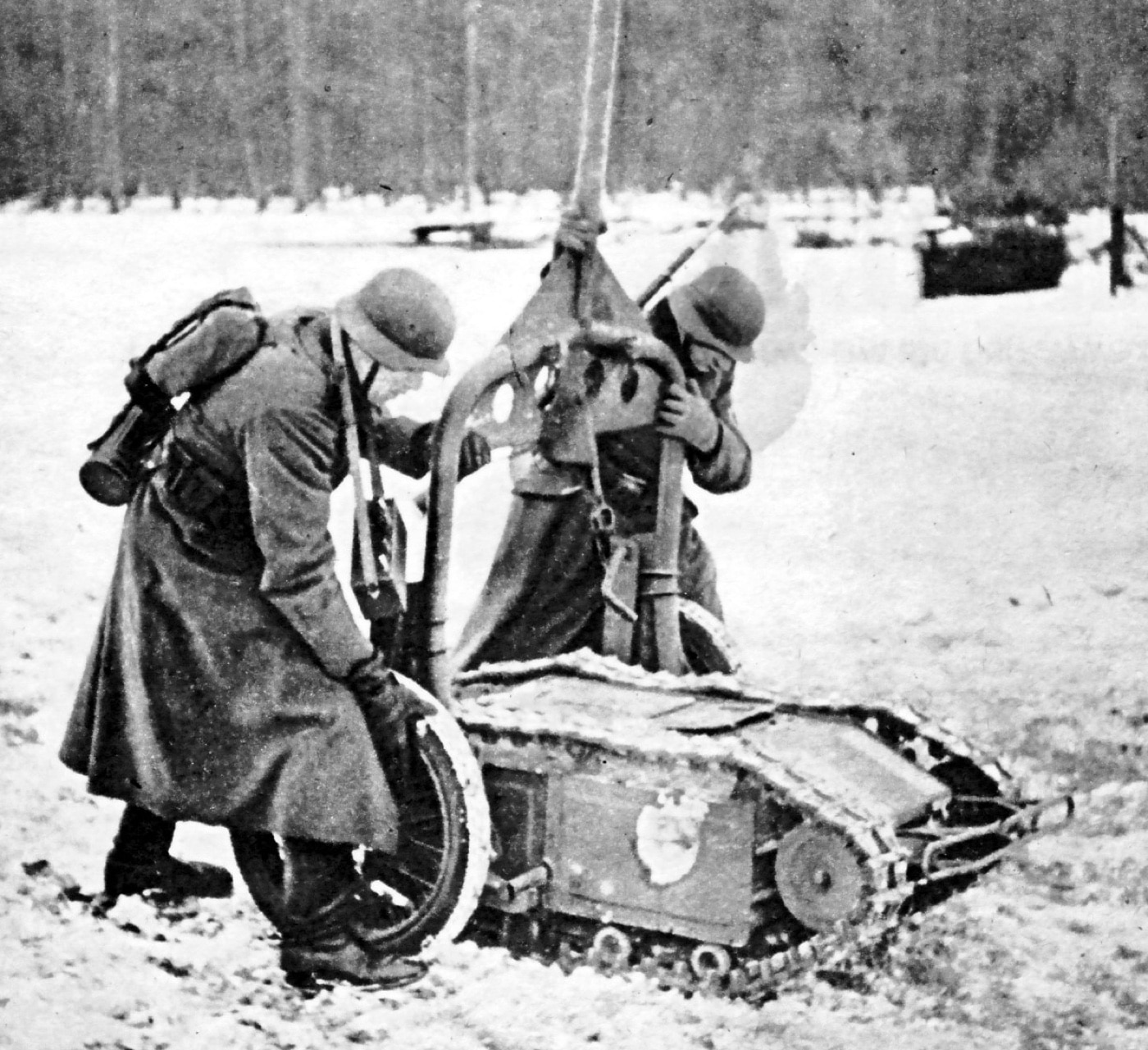
Twin electrical motors powered the first variant of the Goliath tracked mine, and these turned out to be rather expensive and difficult to service in the field. Even so, approximately 2,600 of the electrically powered Goliath were built, with production terminating in 1944. Goliath could carry its 60kg explosive charge nearly half a mile at up to 7 miles per hour.
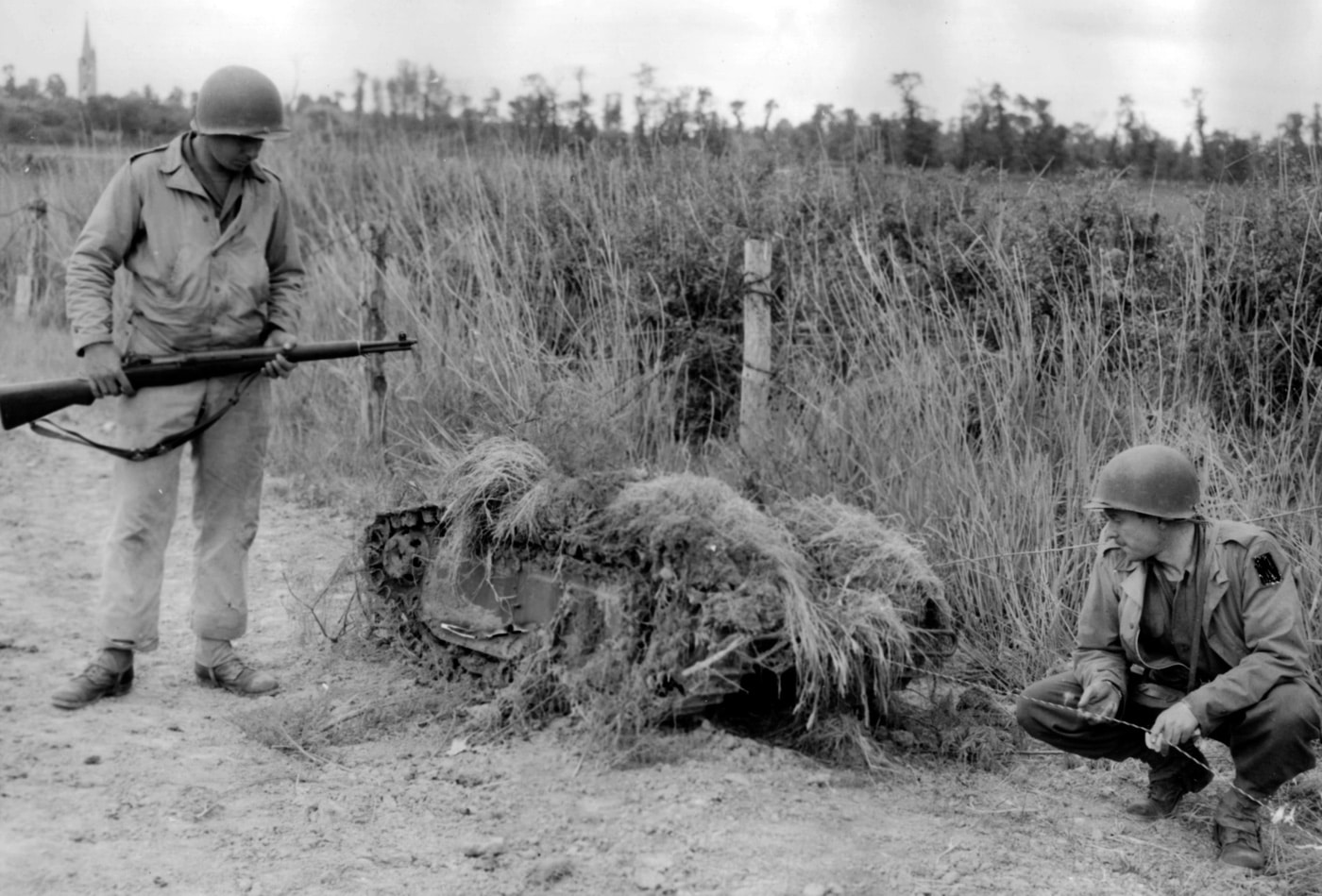
Operators directed Goliath using a simple control box, while up to 700 meters of cable played out from a large spool mounted in the rear compartment of the vehicle. Controls were rudimentary, alternately braking either track to allow Goliath to turn, advance, and finally to explode.
Goliath was designed as a one-time-use, disposable weapons delivery system, and this concept was relatively new in World War II. In that light, it was best for a Goliath operator not to become too attached to his vehicle.
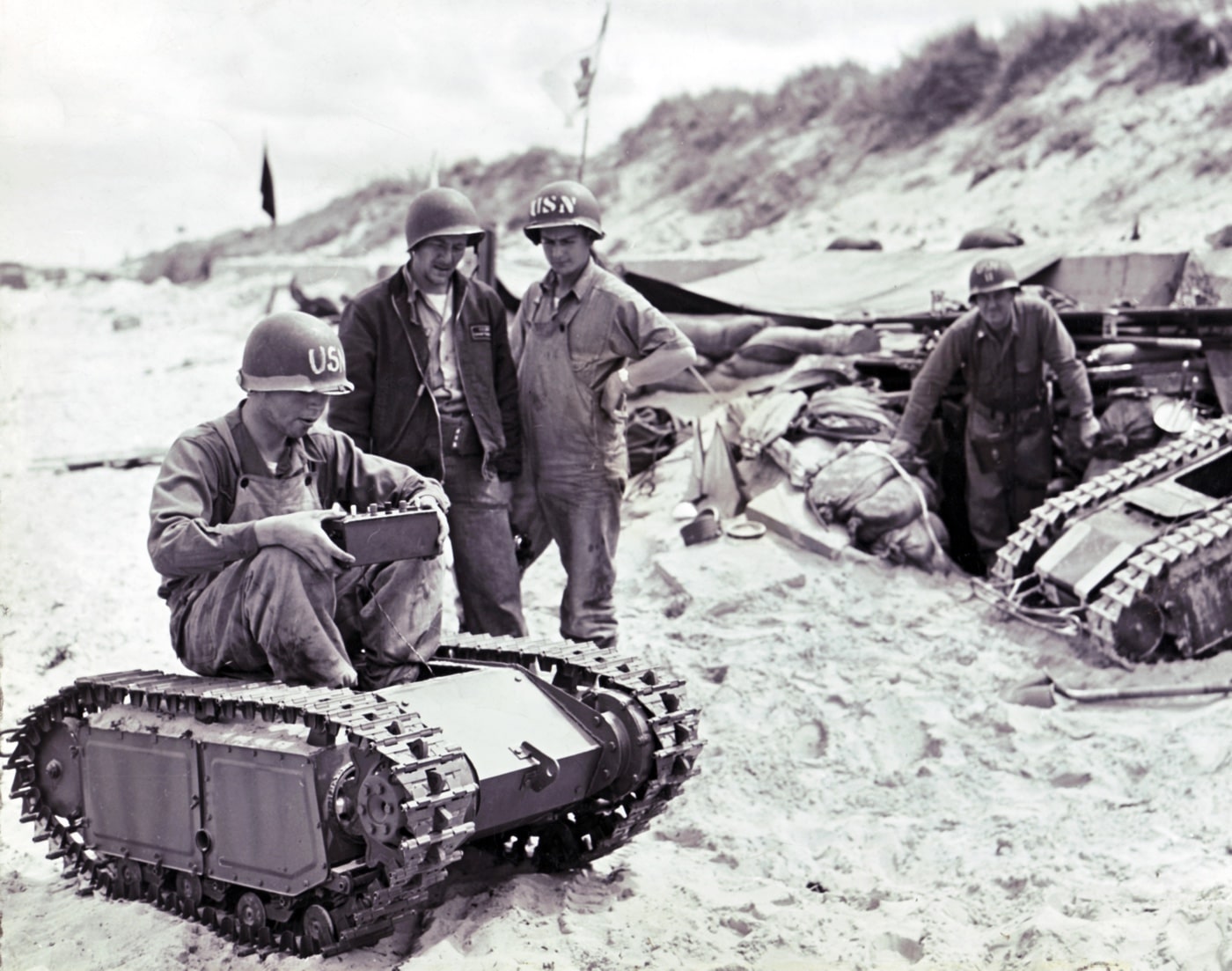
A second, less expensive version of the Goliath (Sd. Kfz. 303) was created and was driven by a two-stroke Zundapp gasoline engine. This gave Goliath a slight increase in power, and its explosive charge was increased to a respectable 100kg. The range was also increased, allowing Goliath to travel up to almost ¾ mile from its controller. Production of the gasoline-powered Goliath lasted from April 1943 until January 1945 and totaled approximately 4,900 units. A simple, two-wheeled trailer was provided to move the Goliath into position — normally pulled by two men.
German Goliath Charging Off to War
Although protected by 6mm armor on the front of the vehicle, the designers did not armor the sides. Armor piercing and incendiary rounds could detonate the explosive charge contained within the Goliath, but ultimately even small arms fire could smash the tracks and running gear or destroy the engine. Even though frontal armor was increased to 10mm on the later, gasoline-powered variant, Goliath remained completely vulnerable at the sides and the rear. As the vehicle was rather slow, opposing infantry could mass small arms fire on the approaching Goliath. Poor ground clearance meant a constant danger of becoming hung up on an obstacle or falling into a large shell hole or trench.
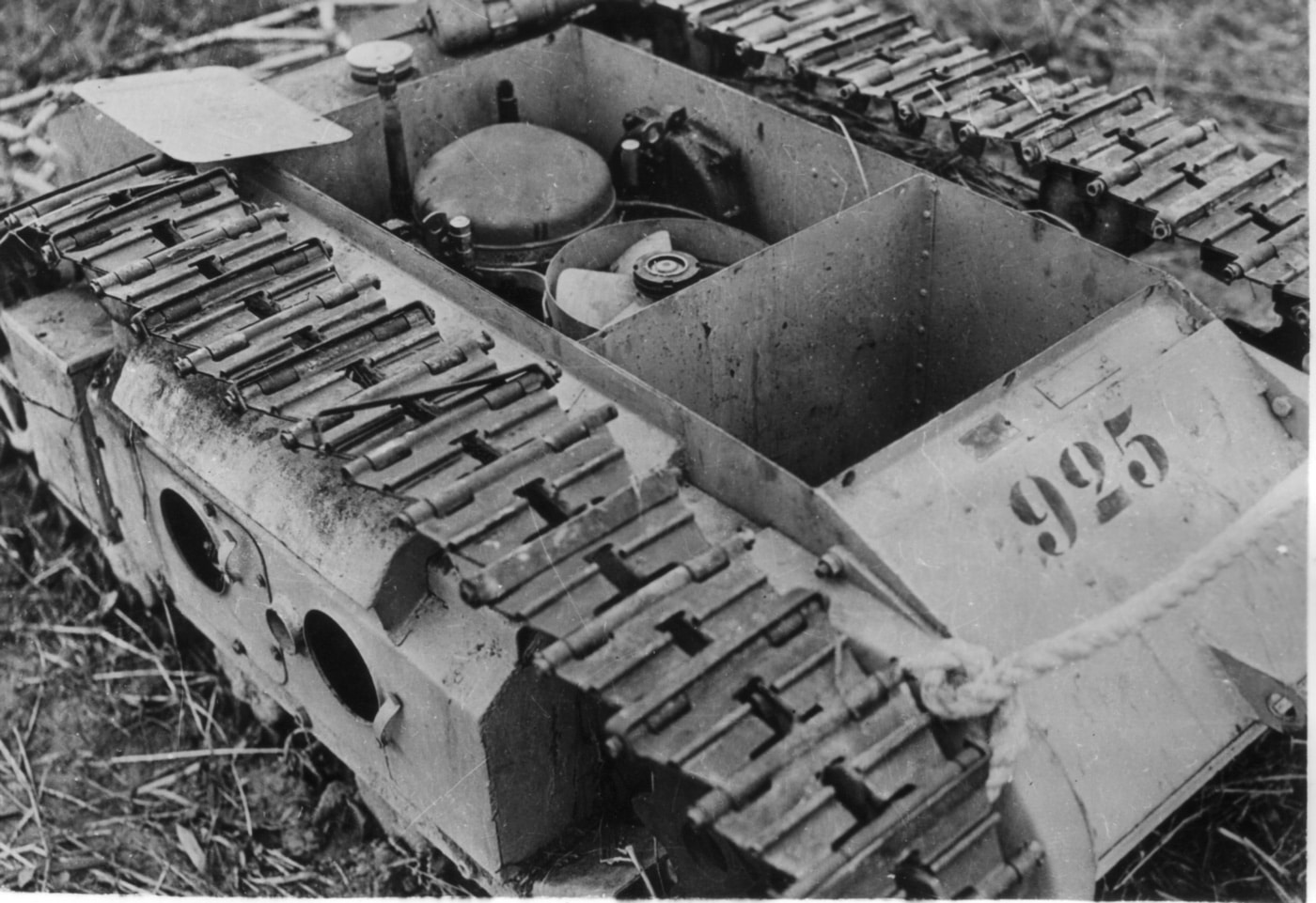
Successful use relied on careful scouting of the operational terrain and covering fire or smoke to protect the Goliath during its run-in to the target.
I’ve seen several mentions of the Goliath used in the anti-tank role (there is a bit of German training film that shows a Goliath used against a parked Soviet Su-85), and while it is possible in theory, it seems unlikely in practice. Stationary targets like buildings, bunkers, and gun positions would be the most likely candidates for a Goliath attack.
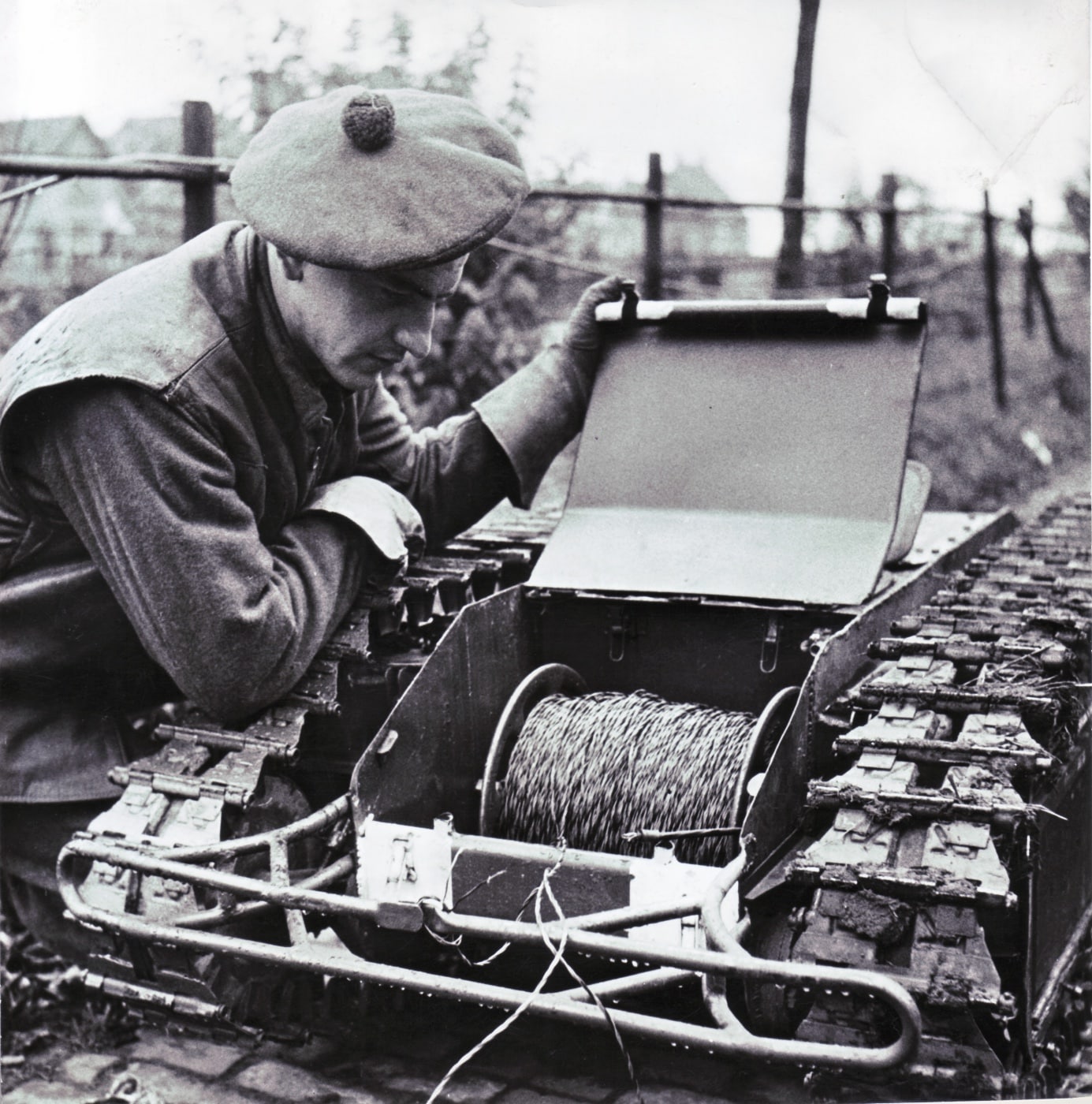
An example of an early Goliath action came during the Kursk operation in the summer of 1943, when the Goliath was used to clear the extensive Soviet minefields ahead of the massive Elefant/Ferdinand tank destroyers of the 654th Schwere Panzerjagerabteilung.
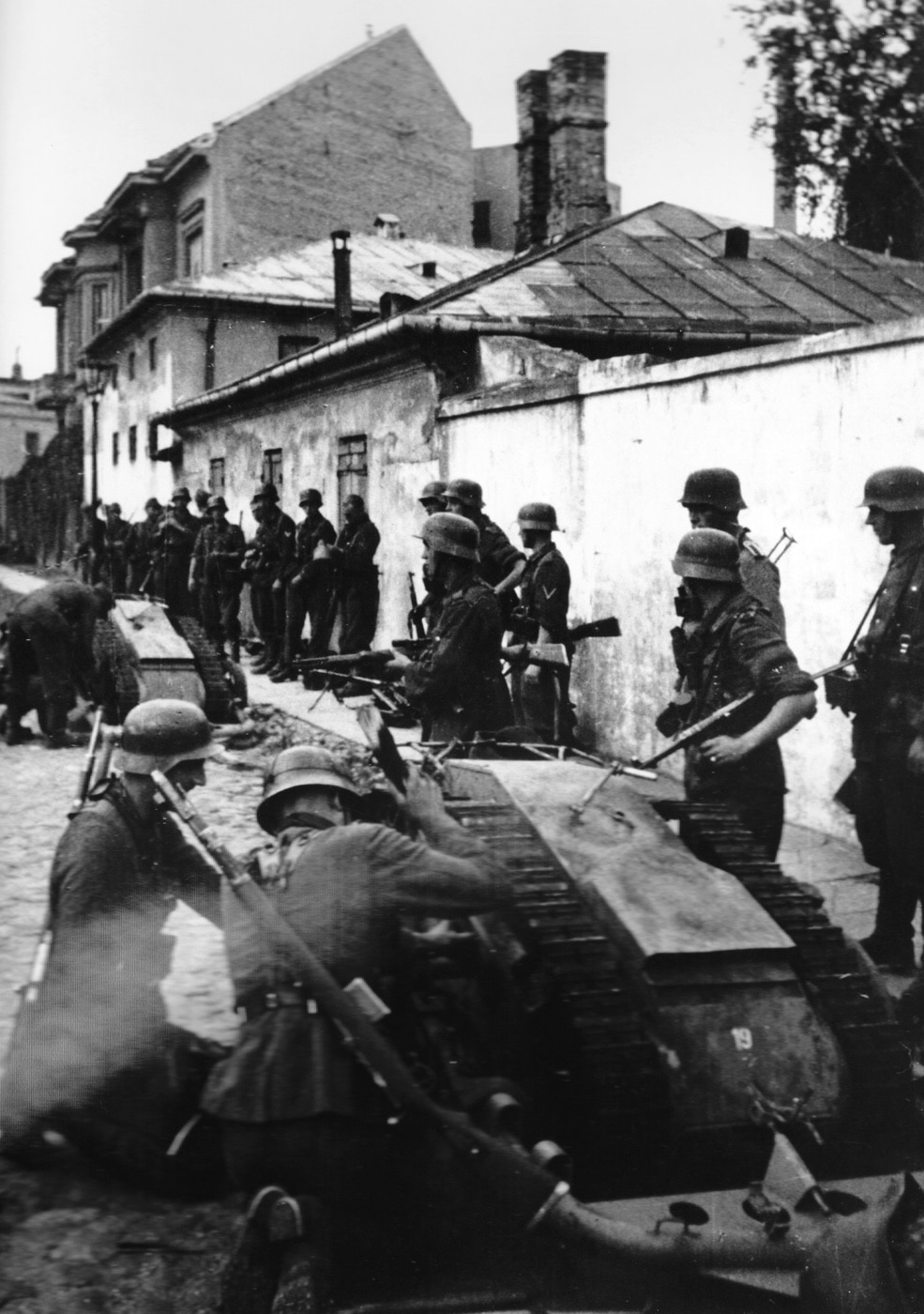
The Germans used Goliath on all fronts except North Africa without any notable success. Even so, the tiny vehicle certainly made an impression on Allied troops, for its unique size and the entertainment value of playing with captured examples — after the explosive charge was removed. American troops encountered the Goliath during several beach landings — Anzio during January 1944, Normandy in June 1944, and in Southern France during August 1944. The vehicles were sometimes positioned to crawl out of small, camouflaged bunkers and explode among invading troops collected on the beach. Apparently, most of the Goliaths set up in this way were knocked out by Allied naval bombardment.
U.S. Army Review of the Goliath Mine
The following notes are from the U.S. Army review of a captured Goliath in 1944:
Cable-controlled demolition vehicle “Goliath”:
The hull is fabricated from 16-gauge mild steel. It is protected by sloping 9mm armor plate, set at 48 and 5O degrees to the vertical. The hull contains three compartments. The rear houses cable and drum, central compartment houses the power unit and control mechanism, front compartment contains the explosive charge. Steering is accomplished by breaking the circuit to the side to which the turn is to be made. This releases the magnetic clutch cutting the power from the engine for that side of the vehicle. The suspension consists of five small bogie wheels on the bottom with two return rollers on top, and an idler wheel at the rear. Each bogie is independently sprung by coil springs. The chain driven sprocket is at the front of the vehicle. The track is 6 5/16th inches wide, with a simple grouser placed on every other track pin. The vehicle has sufficient power to operate on practically any type of terrain. In operation the engines are started by a hand crank, the clutches engaged, and the vehicle then handled from the control box through the cable. The control cable consists of three stands of wire, in pairs, two for steering, and the third for setting off the detonator. The vehicle carries between 100 to 125 pounds of explosives.”
A captured German report on the care and maintenance of the Goliath highlights some of the drawbacks of the early remote-controlled vehicles — the control box was frustratingly fragile, and the Goliath’s wiring was wonky and prone to damage from moisture. The high-tech electronics of WWII seem particularly simplistic now.
ETO Ordnance Technical Report 3 October 1944
Translation of German Document: “Care and treatment of the Goliath in the Field.”
From General Command IV Lw Field Corps 10 July 1944
Staff Officer for Infantry Weapons and Defense against Chemical Warfare
- Practice driving with the Goliath is forbidden.
- The Goliath must be stored in a place that is dry and safe from shell fragments.
- Special care must be taken to keep the steering mechanism (relay system and operator’s control box) dry.
- From the operator’s control box of the Goliath, field cable is laid in a cable ditch, 0.8 to .1 meters deep, to the point where the cable is brought up and connected to the individual wires of the Goliath’s cable. Do not mix up the red, blue, and black wires.
- The Goliath must be cleaned daily.
The report explains that the electrical control and detonating system must be checked daily, and all wires must be closely examined for any breaks or loose connections.
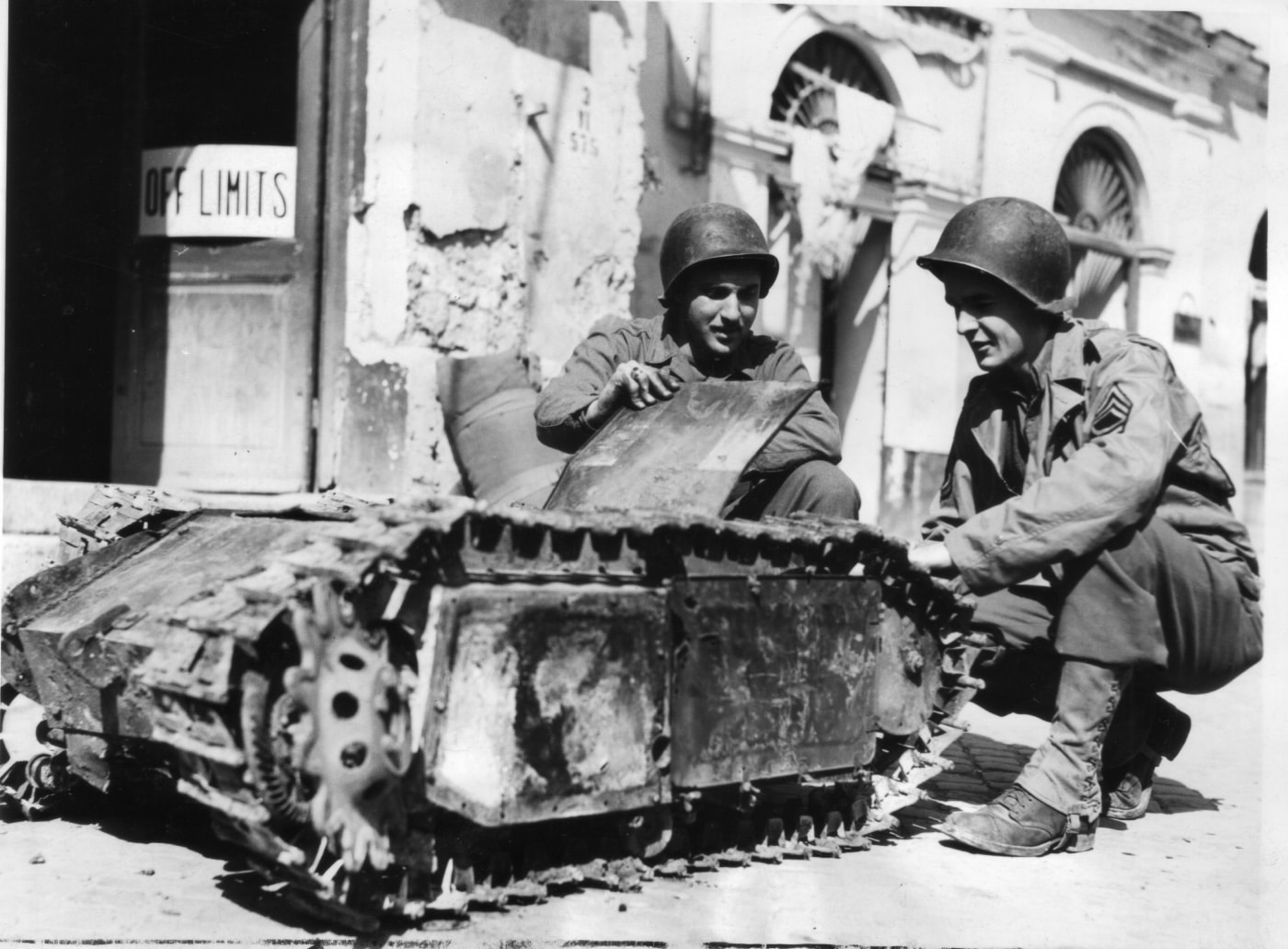
Conclusion
Goliath was gone after World War II, but the concept was not forgotten. The idea has resurfaced in Ukraine, taking advantage of modern video cameras to guide the low-slung bomb to its target, using powerful electric motors that are both quiet and exceptionally fast.
Editor’s Note: Please be sure to check out The Armory Life Forum, where you can comment about our daily articles, as well as just talk guns and gear. Click the “Go To Forum Thread” link below to jump in and discuss this article and much more!
Join the Discussion
Continue Reading
Did you enjoy this article?

 317
317








